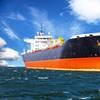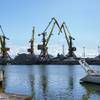Tech Advancement is Key to Slashing Maritime Sector Emissions -DNV Report
Reaching the International Maritime Organization’s (IMO) target of a 20% reduction in shipping emissions by 2030 will hinge on significant advancements in energy efficiency, according to DNV's latest Maritime Forecast to 2050. The report underscores the need for immediate action to enhance energy savings, especially as carbon-neutral fuels remain limited and costly.
To meet the IMO’s decarbonization goal, the shipping industry will require between 7 and 48 million tonnes of carbon-neutral fuels by 2030. However, global production of these fuels is projected to reach only 44 to 63 million tonnes, making it challenging for the maritime sector to secure its share. With upcoming regulations such as the EU Emissions Trading System (ETS) and FuelEU Maritime introducing additional costs for emissions, shipowners must focus on reducing fuel consumption through all available means.
Knut Ørbeck-Nilssen, DNV Maritime CEO, said, "While we are currently witnessing a slowdown of decarbonization in shipping, we are entering an era of unprecedented technological exploration that will drive progress forward. With carbon-neutral fuels in short supply, smart decision-making and strategic investments today are crucial to lay the foundations for future emissions reductions. Prioritizing energy efficiency, leveraging technological solutions, and embracing digitalization are key steps towards reducing the extra cost burden and achieving our decarbonization goals."
The eighth edition of DNV’s Maritime Forecast to 2050 offers an updated view on the regulations, technologies, and fuels essential for maritime decarbonization. The report presents four scenarios that explore different paths to accelerate the adoption of specific fuels and technologies by 2050. It warns that regardless of the path taken, the cost of decarbonization will be substantial. Projections indicate cost increases of 69-75% for bulk carriers, 70-86% for tankers, and 91-112% for container vessels.
“Our latest analyses show that decarbonizing shipping could double the cost of transporting goods by containers”, said Eirik Ovrum, Principal Consultant and Lead Author of Maritime Forecast to 2050. “Ultimately, the rising costs of seaborne transport will need to be passed down the value chain and the market is already seeing trends towards shifting these costs to end-users. To remain competitive, shipowners must develop and execute strategic fleet management plans."
Reducing energy losses is highlighted as the most effective method for cutting emissions. The report suggests that operational and technical measures could lower fuel consumption by 4 to 16% by 2030. Achieving a 16% reduction could save 40 million tonnes of fuel and cut 120 million tonnes of CO2 emissions—equivalent to running either 55,000 small ships or 2,500 large ships on carbon-neutral fuel.
The report also points to onboard carbon capture (OCC) as a promising technology for decarbonization, as it allows the continued use of conventional fuels. However, it notes that substantial development of CO2 handling infrastructure is required. Alternatives like shore power and batteries are also emphasized as ways to decrease reliance on expensive carbon-neutral fuels. For example, shore power could eliminate the 7% of total energy consumption used by ships in ports, which is typically generated by fossil fuels.
Additionally, the report highlights the growing importance of digitalization in enhancing energy efficiency. Digital verification tools are crucial for creating trust, fostering industry collaboration, and establishing new contractual arrangements that promote energy savings.
“Our new report outlines how digitalization can shed light on vessel performance, providing vital data which shows the impact of energy saving measures. Data-driven decision making can then be used to design the next-generation of energy efficient ships which are key to the sector’s long-term success,” Ovrum said.














